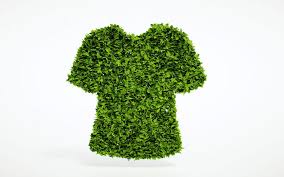In many areas of daily life we have long been concerned with the important questions of sustainability. Whether organic tomatoes in the supermarket around the corner or avoiding unnecessary plastic packaging. How important it is to view environmental protection not only as a challenge, but above all as an opportunity to shape our planet for the future, has long since arrived in most people’s minds.
If, like us, you are one of the 15 million athletes who also like to climb, surf, canoe or go on the SUP board, then you are probably also wondering how the two topics of sport and sustainability fit together .

If your T-shirt is made of organic cotton and your coffee is fair traded, then your training can also be sustainable! As? We talk about this in an interview with Enrique Zaragoza, advisor for sport and sustainability and founder of SustainerSport.com.
Because many in the fitness industry do not yet know exactly what they can do specifically for a more sustainable society or because they lack motivation, his blog makes an important contribution to creating awareness of existing problems and to formulating actionable recommendations for action .
“Nowadays it is no longer enough not to influence negatively, we need concrete and courageous steps to achieve the sustainable UN development goals of the 2030 Agenda”, Enrique emphasizes the relevance of his mission.
Sustainability begins before sport

No matter what sport you do: You can make almost any sport more sustainable. For example, before and after exercise: How you start or end your training can have a major impact on our environment.
Anyone who drives to the gym or even takes the plane to a yoga weekend in Italy produces significantly more CO² than someone who takes the bus for it.
If you even switch to the bike or do sports right in the park around the corner and can run to it, then you have not only done something good for the environment, but also saved yourself the warm-up. Training at home, such as doing yoga in your own living room, saves journeys.
With Urban Sports Club you can do indoor, outdoor activities and live online classes.
Sustainable clothing doesn’t have to be expensive

Every year there are new, better, faster shoes, more breathable clothing and more versatile devices. But every purchase of a new gadget or new clothing also means that more resources are used.
An unbelievable mass of sportswear made from functional materials also makes it difficult for athletes to choose the right item of clothing. Most sportswear are made of synthetic fibers such as polyester (or polyamide) or cotton.
Both materials are not without problems. Although cotton is a natural fiber and is therefore renewable and biodegradable, its cultivation requires a lot of water and pesticides. Polyester, on the other hand, is synthetic and is made from petroleum. Although it is recyclable, microfibres are released with every wash. These pollute our environment and can get into our food chain.
According to Enrique, more research is needed in this area to develop materials for sportswear that are truly sustainable. Sustainability here means:
- As far as possible from recycled materials
- Resource-saving and environmentally friendly production under fair working conditions
- Short delivery routes
- Longevity
- Zero microplastics and systematic Recycling.
Those who take care of what they already have are more environmentally conscious. “We have to move away from disposable fashion – reduce, repair and recycle your sportswear instead”, appeals Enrique.
Sustainability is also important for fitness studios

It’s not about trimming a fitness studio overnight for climate neutrality and zero waste and insisting on morality with a raised index finger. But “there are many small measures and changes that gyms can take to make a big difference.”
The first step is to sensitize its members to ecology, environmental and climate protection and sustainability. So they can think twice about grabbing a coffee in a paper cup.
Consumables account for the largest share of waste, for example in the gym, with the lion’s share coming from the sanitary area.
Toilet paper, paper towels and Co. naturally cause a large amount of waste in terms of both volume and weight.
Cleanliness and hygiene are also a big issue in the fitness studio at the moment. The devices and equipment have to be cleaned and disinfected regularly, the requirements for cleaning agents are correspondingly high. However, various manufacturers already offer clever solutions in this area. “Biodegradable products are a greener alternative,” says Enrique.
Sustainability starts with you and with you. A lot can be achieved with just a little effort and minimal costs. There are countless things that each of us can do in everyday life to reduce our ecological footprint.
3 rules for a more sustainable sport
- Little consumption is the most sustainable consumption.
- Reusing used items is more sustainable than buying new ones.
- If it has to be something new: on resource-saving and fair production conditions Pay attention to recyclable materials.


